5-10-5: Ben Stormes, Curator and Horticulturist for the UBC Botanical Garden's North American Collections
Interview conducted by Eric Hsu Photography by Ben Stormes, Janet Davis, and Eric Hsu

Please introduce yourself.
I am Ben Stormes, and I am currently the Curator & Horticulturist for the North American Gardens at the University of British Columbia Botanical Garden, located in Vancouver, British Columbia, Canada.
The arts or horticulture.
Arts-y horticulture, is that an appropriate answer? Given my career choice and strong personal passion of all things plants, I suppose I’d have to say horticulture. That said, I have a great appreciation for the arts in all forms, and see countless examples of where these two come together with tremendous synergy.
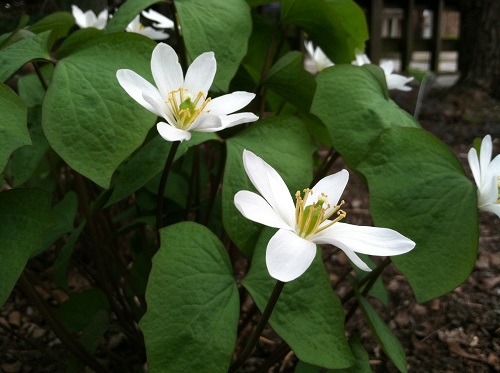
What is your earliest experience with plants?
I grew up on a working farm outside a very small town in rural Ontario, and my earliest experience with plants was likely running through wheat fields or getting lost in corn fields. However, my first horticultural and botanical experiences with plants would have been spending hours upon hours in the wooded “back 40” of the farm property, exploring the beech-maple forest throughout the seasons. I remember being captivated by the spring flush of Erythronium, Sanguinaria, Trillium, Claytonia, and other spring ephemerals that grew profusely in the rich understory. Later in the summer the beautiful light that filtered through the high canopy is a vivid memory of my childhood experiences with this particular forest. I used to bring woodland treasures back to the farmhouse and grow them in beds that, reflecting on it now, were less than ideal growing conditions. I quickly filled beds with plants not only from the forest, but from the ditches, railway corridors, hedgerows, and creek edges in the rural agricultural landscape. My mother was incredibly accommodating, allowing me to bring home all manner of plants, and my older brother to do a similar thing with all the fish, insects, reptiles, and amphibians from these varied habitats as well. Between the two of us we had a rather eclectic assemblage of elements from the landscape that was our playground as young boys.
That passion led to a job working in a plant nursery when you were 14. Do you still have fond memories of this first job?
Absolutely! It was a great environment to be a young gardener keen to learn new plants, familiarize myself with botanical Latin, and have ready access to a steady stream of staff-discount plants! My mother would drop me off at this little nursery when she went grocery shopping in the next town over, and since this ritual happened routinely on Saturday mornings they offered to pay me to water when I was there. It escalated quickly from there to a steady job I maintained through high school and most of my undergraduate years. I had a really supportive and kind manager who saw my sincere interest in the plants, and he really encouraged me to bring in and grow as much as I possibly could. I was overseeing the herbaceous plant side of the business within a few years, and had free reign so long as I could keep the stock in good health and maintain customer interest in our offerings. This flexibility enabled me to bring in all kinds of new plants that I wanted and could not find in the area, but I had to be able to sell them to others. Working in customer service in horticulture was a rewarding experience, and this face-to-face experience with other gardeners allowed me to share my passion with other gardens while learning from some seasoned garden veterans. It was a great opportunity for a budding horticulturist.
You studied landscape architecture at the University of Guelph. Landscape architects sometimes are criticized for their limited plant vocabulary and a predilection for hardscaping. The divide now is becoming smaller as garden designers will collaborate with landscape architects to maximize the projects' potential. What was your perception as an undergraduate in landscape architecture?
While I had always been focused on plants, I have strong interests in design, geography, and ecology. When I finished high school and left for university, landscape architecture seemed like the logical fit to blend these interests. The endeavor was met with mixed feelings as I carried on in my studies, much of what you mentioned about the profession I was finding to be true. It was hard for me to see where I was going to fit into the world of practicing landscape architecture, or to identify an aspect that allowed me to pursue my passion. By the time I was halfway through my undergrad, it wasn’t a career path I intended to seriously pursue. However, I saw it as an opportunity to learn a set of skills that do have relevance to my career interests, and remained most focused on these aspects throughout the rest of the program. I had a few great professors who understood this, and strongly supported me in making the program relevant to my interests. I’m very grateful to Dr. Nate Perkins, Dr. Karen Landman, and Sean Kelly for this.
All that said, landscape architecture as a profession is often met with hostility and potentially disdain by horticulturists. While I can see where these feelings may originate, there are some really incredible landscape architects doing tremendous work. We need to do a better job of understanding that landscape architecture is about the build environment at large, and not strictly about plants. In certain instances, a botanically rich and intensive planting may not be the most suitable given the demands on the site, or the intended programming. We can be better about being open to realizing what landscape architects do really well, while still demanding horticultural sensitivity and excellence where it is required. As you noted, bringing in outside expertise for the latter is becoming the norm, which is great.
What did your undergraduate thesis reveal about the value of botanical gardens as a societal and professional benchmark in environmental design?
My undergraduate thesis explored the multiple layers of value and utility afforded through the diverse programming at botanical gardens, and was a very interesting endeavor for me personally. Prior to undertaking this project, I had only worked with a single botanical garden as a student in an applied horticultural training program. The undergraduate thesis allowed me to explore more comprehensively the range of activity currently (and historically) taking place at botanical gardens. It really opened my eyes to how different one garden can be from the next, and the direct involvement some gardens play in addressing socioeconomic issues, community health, and gaps in plant-based curriculum. We hear a lot about botanical gardens being “modern day arks” and crucial players in contemporary issues of plant conservation. While this conservation aspect is without doubt a very noble and crucial part of what we do collectively, and an area I care about deeply, as a community we are working in other important arenas as well. This project helped me understand these other areas of involvement, as my previous exposure was primarily with ornamental horticulture and plant conservation.
The project helped me solidify my commitment to working with botanical gardens, as what I was exploring resonated with me on a number of levels. Previously I was impressed with the collections or aesthetic of individual gardens, but had given little thought to the collective role we play when the sum of our efforts begins to be tallied.
NYBG School of Professional Horticulture and Longwood Gardens' Professional Gardener Program are only US programs that can be favorably compared to Niagara Parks School of Horticulture. You were a graduate of this three year program. Can you give a brief overview of what this school offers to prospective candidates?
The Niagara Parks School of Horticulture is a three year training program that is delivered as 36 consecutive months of integrated theoretical and applied horticultural experience that take place within The Niagara Parks Botanical Garden. The program has a standard curriculum of academic programming that all students complete, with classes running year-round. Students take on progressively more responsibility and leadership as they move through the program, and are given experiences in leadership and supervisory aspects as they move into their senior year. The program offers the opportunity to work directly in the horticultural operations of a 100 acre botanical garden while also completing diverse academic classes covering aspects of horticultural theory, landscape design, plant identification, arboriculture, plant production, and a number of other related topics. The program accepts about 12 students a year, with the first and second year students living on-site in a residence building located within the botanical garden. I always said it was probably the most spectacular front yard I’d ever had, looking out over the 3 acre formal rose garden and associated parterre. The personal relationships and interpersonal growth that happen as a result of living and working with 24 individuals is a tremendous experience in and of itself. It is in some ways an experience that defies explanation.
Botany is becoming less integral and significant in college programs, and this trend is unfortunate because skills in botany are crucial in this era of ecological uncertainty. You worked as the botany intern at the Royal Botanical Garden, a position not common in public gardens. Do you see botany becoming irrelevant or simply becoming emerged as professions become interdisciplinary?
I don’t think that botany will ever become irrelevant. Plants are such fundamental components of life on earth, and are involved in countless aspects of our daily life. Because of their significance, I feel that their continued study will be necessary. However, the way these studies are carried out, their focus and methodology is what will (and has) drastically changed. The “pure” study of botany has indeed suffered, although botany is becoming more integrated as an interdisciplinary study.
One way the needs are being addressed due to a shortage of trained botany is enhanced reliance on “amateur specialists”. While by no means an adequate replacement for an army of formally training and practicing plant taxonomists, botanists, or otherwise, the skill and passion of these amateurs does help to bring some reprieve. It is important to give credit to the countless individuals who have made it a personal life goal to dedicate significant time and resources to their botanical interests, and the generation of shared information that comes from these concerted efforts. Are they rewriting the treatments for the new volumes of Flora of North America? No. Are they publishing books, blogs, or otherwise that share their botanical pursuits. Certainly. Are both of use to those of us working in the fields of botany, public gardens, horticulture, etc.? Indeed.
Throughout your career, education has been an underlying theme that has guided your jobs. You developed and executed public education programs on sustainable urban landscapes for the city of Guelph and taught courses at the Niagara Parks Botanical Garden and School of Horticulture. Finally you left to enroll at Cornell's public garden management program. Although curatorial work will be your primary role at UBC Botanical Garden, I suspect that education will still be part of the big picture. How did you come to realize the significance of education in gardens?
I’ve always been keen to share my excitement and passion for anything with others, and feel that this sharing is a natural human inclination. Plants and gardens at large, are fascinating on so many levels. Both seem easy to turn the right audience on to given the right situation and approach. I attribute much of my educational work to those who asked me questions, be it in a formal learning environment or in a more passive and casual situation. Teaching and learning are reciprocal situation through which the one who is teaching imparts knowledge, but also realizes how much is yet to be learned.
In some ways it is the responsibility of everyone to teach and share knowledgeable it in formal situations or in more casual circumstances. This sharing of knowledge is one of the cornerstones of human culture and growth. Who doesn’t like to share their passion, and get others interested and engaged with this passion, whatever it may be?

Although educators have embraced technology in numerous ways, they have pointed out its shortcomings. Attention spans are shorter and fickle due to dependence on social media, library research and skills are deficient, and cyber bullying has escalated. How can the tactile and 'tech-resistant' beauty of plants be conveyed through technological tools?
A tricky subject, to be sure. Technology is something to be embraced, and it brings some really powerful tools to botanical gardens. The way we manage our collections data, and share that data with other is a profound change that has been brought about by technological advancements. Digital tools have helped bring communities together to share information, industry concerns, trends, etc. Social media is even being used to assist in the identification of new plant species.
With respect to how to best preserve the tactile experience of a personal encounter of the botanical world, we could be using technology to garner interest in our collections, while still promoting the direct experience of them as being irreplaceable. Using social media, websites, or other digital communication tools to highlight the important work we do, special or unique portions of our collections, specific garden spaces, or other exceptional qualities of our gardens to targeted audiences can help garner interest in visiting in person. We could probably do a better job of ensuring the message of “it has to be seen to be believed”, or “the experience of seeing this plant in the context of the garden itself is not to be missed” is repeatedly projected in our promotional material. Highlighting the garden EXPERIENCE is tremendously important, and can’t be accurately translated into a digital format.
Latching on to tactile experiences that our audiences may be looking for and using them as a “hook” to get new audiences interested is another way to get past the tech blockade. If people are willing to come and get their hands dirty for vegetable gardening only, then use a program around this topic as a way to get people to you garden. Then, once you’ve got them with their hands dirty, be sure to show your incredible Podocarpaceae collection, explain why it is important, and tell them what they can do to promote it (and your brand) within your community. It’s a lot easier to extend interest from one thing you are doing to another, rather than try to generate interest from a static point.
Public gardens connected to universities often develop student outreach programs. Scott Arboretum offers a houseplant clinic for incoming freshmen and Cornell Botanic Gardens offers student orientation tours. Will you be taking advantage of your association with University of British Columbia for student programming?
It takes some time to get to know a garden, and university gardens are often especially complex in their structure and relationships within the greater university framework. I do not yet feel that I know how to best answer this question, as much of my first half year has been getting to know the garden site itself, and has been less focused on the greater university contest. I do know that there are a number of classes that utilize the collections, and I have already received requests for material from my areas to support research and teaching within the biological sciences. I would like to continue to build relationships with the faculty, and ensure that the garden is seen as a valuable contribution to the university’s mission. However, this early on it is difficult for me to articulate just how this will take place.
The North American gardens at UBC Botanical Garden comprise BC Rainforest Garden, Carolinian Forest Garden, Garry Oak Meadow and Woodland Garden, and Pacific Slope Garden. Can you highlight the differences between these gardens?
Three of the four represent an ecological continuum, largely coastal and near-inland, highlighting vegetation that stretches from British Columbia to northern California. These gardens are the BC Rainforest, Garry Oak, and Pacific Slope.
The BC Rainforest Garden is one of the original gardens from UBC Botanical Garden’s current location, having previously been the BC Native Garden with plants from across the province’s floristic communities. It went through a long period of abandonment during which many of the accessions gathered from further regions of the province did not survive in the local climate. Thus, it is not more representative of the rainforest biome that naturally occurs in the lower mainland of BC. The BC Rainforest Garden contains a high canopy of secondary growth mixed conifer forest with a moderate understory of various woody and herbaceous taxa. I’m actively wild collecting material to develop this garden space, and very much looking forward to seeing it develop.
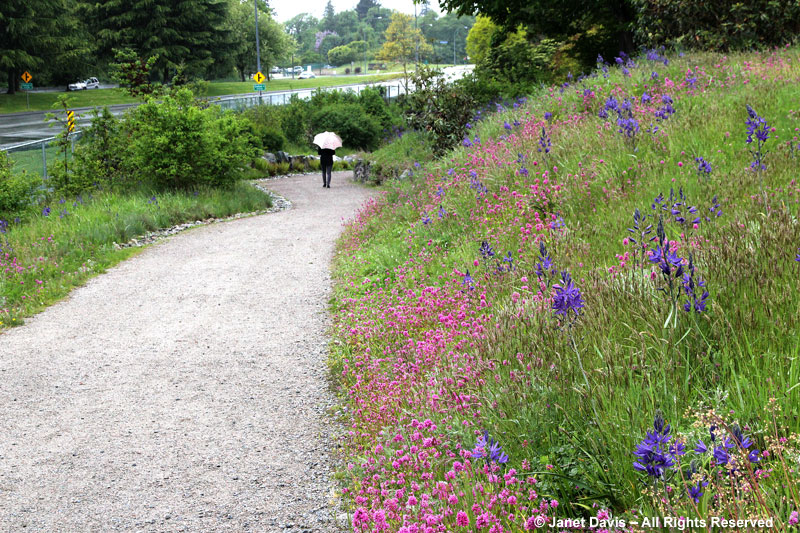
The Garry Oak Meadow and Woodland is an informal garden space that represents an endangered ecosystem in British Columbia. It is a highly seasonal landscape, with a pronounced spring flush of colourful blooms followed by a more reserved savannah-like aesthetic during the summer months. This is a relatively new garden, having been begun in 2006. It contains almost exclusively wild collected taxa from the local remnant garry oak meadows.
The Pacific Slope is as much an idea as it is a garden space right now. It currently is represented by a few dozen plantings of various woody taxa wild collected from western Oregon and Northern California underneath existing conifers in an open lawn setting. The hope is to create a garden area that showcases some of the incredible plant diversity that can be found on the western slopes of the coastal mountain range, from the subalpine to sea-level. In particular, there are a number of interesting gymnosperms that grow in this region that we are excited to get growing. Patience is a virtue.
The Carolinian Forest Garden is the one that really stands out as the odd-ball step child, as the other three represent a western coastal continuum. However, it is an important garden in highlighting Canadian plant biodiversity. The Carolinian forest zone is restricted to a very small area in Southwestern Ontario, but contains about half of our national flora. It also contains about a quarter of our country’s human population, so there are serious pressures on the remaining forests and its numerous rare species contained. The garden is well poised at UBC Botanical Garden to tell the story of this forest, and to raise awareness of the diverse forest types that can be found in Canada. It’s also important in referencing Sino-American plant disjuncts, and is well suited to complement UBC’s impressive Asian plant collections. A young garden having been started in 2006, it is now at a stage were understory plantings will be important in establishing the character of this eastern deciduous forest model. Very exciting times ahead!
Of these four gardens in the North American gardens, the Carolinian Forest Garden is probably the one you're most familiar with. How knowledgeable are you with the other three, given their western ranges?
The western garden collections are certainly an exciting opportunity for me to sink my teeth into new vegetation communities and ecologies that I do not have a great deal of experience with. There is always something a little daunting about the unknown, and when it represents 75% of your collections it could be easy to feel a little overwhelmed. I am fortunate that the staff at the garden, including not only horticulture but also research and education departments, are very open to collaboration and information sharing. I’ve already learned a tremendous amount, and have been fortunate to have been able to travel to intact ecosystems that some of these western gardens are focused on representing.
It’s also important to remember that what we are developing at UBC Botanical Garden are garden spaces, and not necessarily self-sustaining and fully representative vegetation zones. This view allows for some freedom and interpretation of these natural areas, and a translation of this interpretation into a garden spaces that honors them with integrity, but may not be complete representations.
Lastly, the “Carolinian” forest zone in Ontario is a very small area, but incredibly diverse with respect to plant species. Growing up in such an environment, and familiarizing myself it with over the years, I have come to welcome the challenge to learn new plants. It also forced me to come to peace with determinations to a generic level from time to time. This acceptance helps when you are learning new floristic regions, and knowing how to read the landscape at large is as (or more) important than recognizing esoteric infraspecific taxa growing upon this landscape.
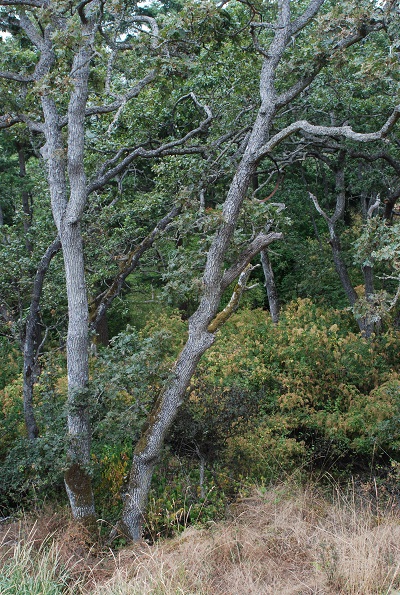
When I visited British Columbia in 2012, I grew to admire and love the garry oak meadows, which reminded me of the wizened oaks in England's Wistman's Wood (Dartmoor National Park). These meadows are considered one of the most endangered habitats since only a surprisingly 5% of them are extant. The Garry Oak Meadow and Woodland Garden is a relatively new addition that still sees continual development. How do you plan on overseeing this garden through its subsequent phases?
Meadow landscapes can be a curatorial nightmare! In essence, they are extensive herbaceous plantings of a number of accessions seeding everywhere. This is a plant records horror story, and the sort of thing that can keep curators up at night.
Having said that, meadow landscapes can be tremendous assets to a garden, particularly when they represented a threatened ecosystem and demonstrate a little-known ecology. The Garry Oak Meadow at UBC Botanical Garden presents a great opportunity not only for plant conservation, but also huge potential for public education about plant conservation, ecology, ethnobotanical knowledge and management, and sustainable behaviors. Many of the threats to the Garry Oak ecosystem in British Columbia are directly related to human activity. If the Garry Oak Meadow and Woodland at UBC Botanical Garden can help communicate these threats, raise public awareness, and guide individuals in making informed decisions that directly impact the Garry Oak ecosystem in British Columbia, then we have done a great service in meeting our educational mission as well. An interpretive program is currently in the works for this garden are, and I’m excited to see this project move ahead in the near future.
From a curatorial and horticultural perspective, managing the aggressive turf grasses and other perennial weeds that are prone to invading these meadows both in the garden and in the wild is paramount. I am currently working on a management plan for this area that will hopefully identify primary and secondary concerns in this regard, and allow for early detection and consequent timely management of such treats to the meadow. Setting priorities and timelines is crucial if issues are to be kept to a scale that is manageable. This is especially true given that UBC Botanical Garden operates without the use of chemical herbicides.
There are a few key species that are endemic to the Garry Oak ecosystem in British Columbia, and I’m keen to target some of these taxa for enhanced representation within the garden. I am fortunate that there is institutional support for collecting trips and enhanced collections development with respect to the Garry Oak Meadow at UBC Botanical Garden, as this will be key to increasing not only the rare and endemic flora, but also the species composition of the meadow overall.
Lastly, there is tremendous opportunity for partnership with external community groups, non-profit organizations, and other bodies that are very active and interested in the Garry Oak ecosystem. Building these relationships to foster information sharing, broad approaches to genetic preservation, and collaboration on education and outreach are aspects of the Garry Oak Meadow that I’d like to work on in the coming years.
North America and Canada may share the same border and language, but they still have perceptible cultural differences. What attitudes have you discerned to be different in American and Canadian horticulture?
Not much, to be perfectly honest. We are a smaller community, but we cover a huge geographic range with very different growing conditions. I moved from a Zone 5 to a Zone 8/9 garden without crossing a national boundary. Another new transplant to UBC Botanical garden moved from a Zone 3 to our Zone 8/9 after only a 14 hour drive. This may be something that is somewhat unique.
With respect to public gardens, there is not the long history of philanthropy and estates left as public gardens with sizable endowments to support them here in Canada. Most of our public gardens are either university associated or branches of local government. There are always exceptions, and I realize that vast endowments may not be the norm in the USA either, but in visiting a number of American gardens it struck me how very different this aspect was than my experiences in Canada.
Over the course of our correspondence, you have professed a love of woodland herbaceous perennials from east Asia and North America. It's a fitting love as both regions share floristic similarities. What are some of these plants you cannot be without in your garden?
Herbaceous Berberidaceae, all of them! I know some aren’t necessarily from the regions noted, but the vast majority are, and they are all of interest to me. Epimediums are of particular interest, and were responsible for starting this landslide. They were great in that they were 1) large enough and hard enough to get that I wouldn’t get them all easily, 2) small enough that it was a manageable group while working and/or going to school full time, and 3) enough new discovery and information that the reading was interesting. It branched out to the rest of the herbaceous Berberidaceae, and I really enjoy them all.
Increasingly I’ve become more interested in the ferns. Dryopteridaceae and Polypodiaceae in particular, but this is largely an itch yet to be scratched. It’s hard when you don’t have your own garden, and your work spaces are restricted geographically….
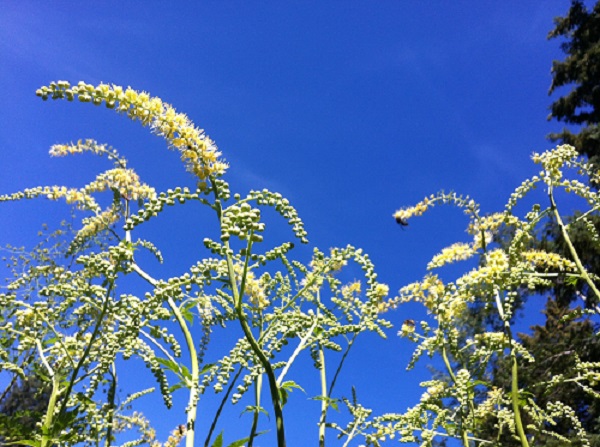
Actaea are all such lovely plants, and while all are superficially similar, there are some distinct and truly wonderful selections. I love them, and have for a number of decades. These plants just get better with time, and one of my original A. cordifolia (bought as A. rubifolia) plants that has been moved around a few times over the last 20 years and now resides at my parents’ house is easily 7’ across and 7’ tall when flowering. A favorite, and truly incredible!
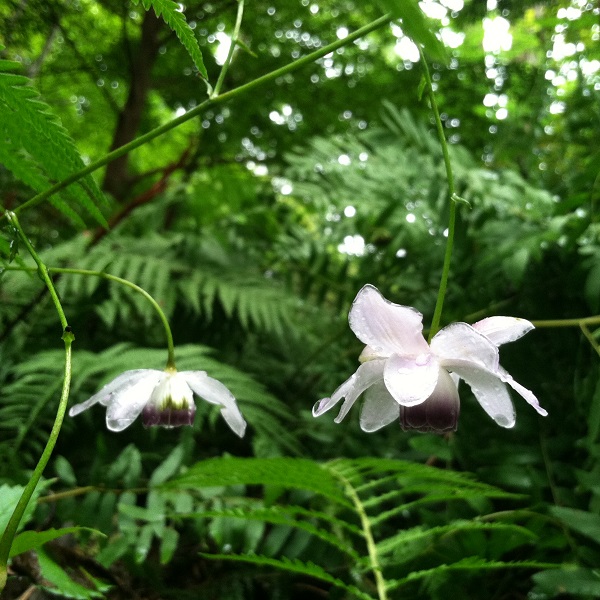
There are lots and lots of others: Anemonopsis, Trillium, Disporum, Polygonatum, Cardamine, Carex, etc etc etc., but I won’t go on any further.
Okay, okay, a little further: Hamamelidaceae and Hydrangeaceae are others that I’m particularly fond of, though not herbaceous so I won’t go into length.

A generous benefactor gave you a plot of land. What kind of garden would you create?
How big is the plot of land? What’s the soil like? Am I building the garden for myself, or the benefactor?
I’m pretty accommodating, so if the generous gift came with a specific aesthetic I’d be happy to make it work, so long as I could get creative with the plantings.
If it were purely my garden, it would probably be a space that is constantly under active development and change. I’ve never been content to call any garden space “done”, and am constantly digging, dividing, discarding, adding, etc.
My style is somewhat erratic and eclectic, though always lush, full, and layered. There is little that I enjoy more than seeing layers of interesting plants arranged skillfully. Though I’m fonder of organic and a fairly uncontrived style, I do enjoy the occasional display of formality peppered throughout the garden. This may be a clipped hedge among lush and varied perennial plantings, or a Doric pillar standing in a woodland garden. These sorts of elements need to be carefully done, but when done well can be breathtaking.
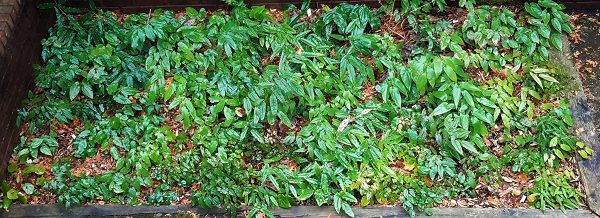
I compulsively propagate plants, so the garden would also need to include a “back of house” area I could use for controlled pollination, division, growing on, and trials I really enjoy seeing these types of areas in other’s gardens, too. It’s a sneak peek at things to come, and I always find it very exciting.
One day, you're stranded one of the islands off Vancouver Island. What is your desert island plant?
Am I going for successful cultivation, or selfish indulgence? Do I have greenhouse spaces, or are we talking strictly local-climate adapted?
For successful cultivation, Arbutus menziesii. It grows extremely well on our coastal rocky outcrops, and has some lovely attributes. The dense evergreen canopy might afford some relief from all the winter rains, too!

If I were to select based on personal indulgence and I had access to greenhouse space, I’d say Cypripedoiodeae. Paphiopedilum and Phragmipedium specifically. As a teenager I had a thing for orchids, this group in particular, but gave it up years ago. Given the right conditions, space, and budget I could probably get back into them pretty seriously.
If it had to be local climate adapted but with some horticultural support, I’d say the entire genus Epimedium. A couple/few clones of each species so I could work on some breeding lines (they are self-sterile) and I’d be happy for years to come. Interspecific hybridization could be fun too, but I’m more drawn to species level taxa generally.
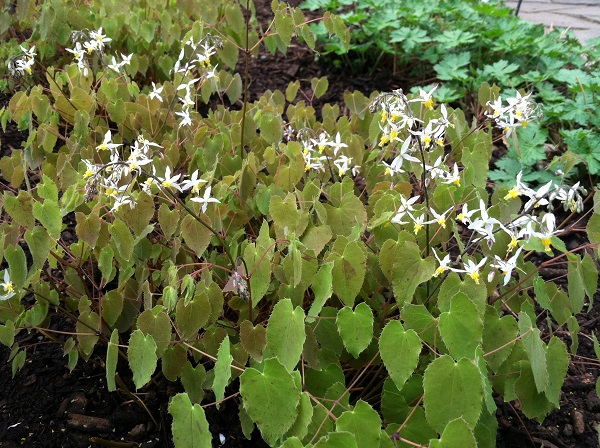
If your passion for plants and gardening can be conveyed through music, what vinyl albums would you single out and why?
I should start by stating up front my musical tastes have been described as everything from “weird” to “horrible”, with most comments falling somewhere within this spectrum. I prefer eclectic. That said, here we go:
Jungle Brothers – “Straight Out The Jungle” LP – 1988 - Warlock Records
https://youtu.be/K0wVNPWWZIw
I grew up on hip-hop (strange for a white kid in the late 80’s-early 90’s in rural Ontario, I know). This one is mostly selected for the title and artists name, rather than content. Content is good, though.
Kangding Ray – “OR” LP – 2011 – Raster-Noton Recordings
https://youtu.be/_RID_nH74uI
Subtle at times, overpowering at others. Lush and rich in sound, yet minimal and unassuming in aesthetic. I feel like it’s reflective of a streak of my approach to horticulture and my general garden aesthetic. There are a number of releases on this label, and/or by this artist, that would have fit well.
Hidden Agenda “Keep Pressing On / Get Carter” 12” Single – 1995 – Metalheadz
https://youtu.be/6BU6uWH8OjI
It’s not a full album, but rather a 12” single release typical of the genera. The B side of this single, “Get Carter”, is really the one that I think relates to the question. Hidden Agenda were a well-respected, yet little duo known for general disregard for the “flavor of the month” style production. They generated a unique sound that fused disparate influences: Drum and Bass/Jungle of the mid-90’s, funk, soul, and rare groove to create music not necessarily targeted for the dancefloor like much of their contemporaries. The result is something that I feel translates to my approach of gardening: a montage of various influences that can be pulled together in interesting and unique ways that do not always conform to the norm, but are not so far removed that they don’t relate at all. Most of all, they remained true to their influences and interest, and paid little attention to fads.
W.A Mozart – Horn Concertos Nos 1-4/Wuintek K452 – Herbert von Karajan & the Philharmonia Orchestra with Dennis Brain on Horn – 1998 EMI (remaster of a 1973 release, with original recordings coming from the 1950’s).
Playful and fun, but menacing and haunting from time to time. Catchy, and easy to enjoy. Something very translatable about them for most people, but also something here and there that may only be noticed/appreciated by another avid practitioner. Leaves you tapping your toes.
Outside of work, what inspires you?
Gardening. I could do it in all of my free time. Honestly. I’m also a big music lover. A wide variety of a variety of styles, but I also love dance, so there are some logical connections there. I really enjoy beer, and craft beers are plentiful here in B. It’s a wonderful thing. I enjoy being out of doors, particularly in forests, and not botanizing if I can manage it. It’s hard, but it’s a great experience to just be in a forest and relax. I also love food, and lots of it. Because I like to eat a lot of food, I also have come to enjoy cooking out of necessity. Good friends and strong personal connections are also vitally important to me.






